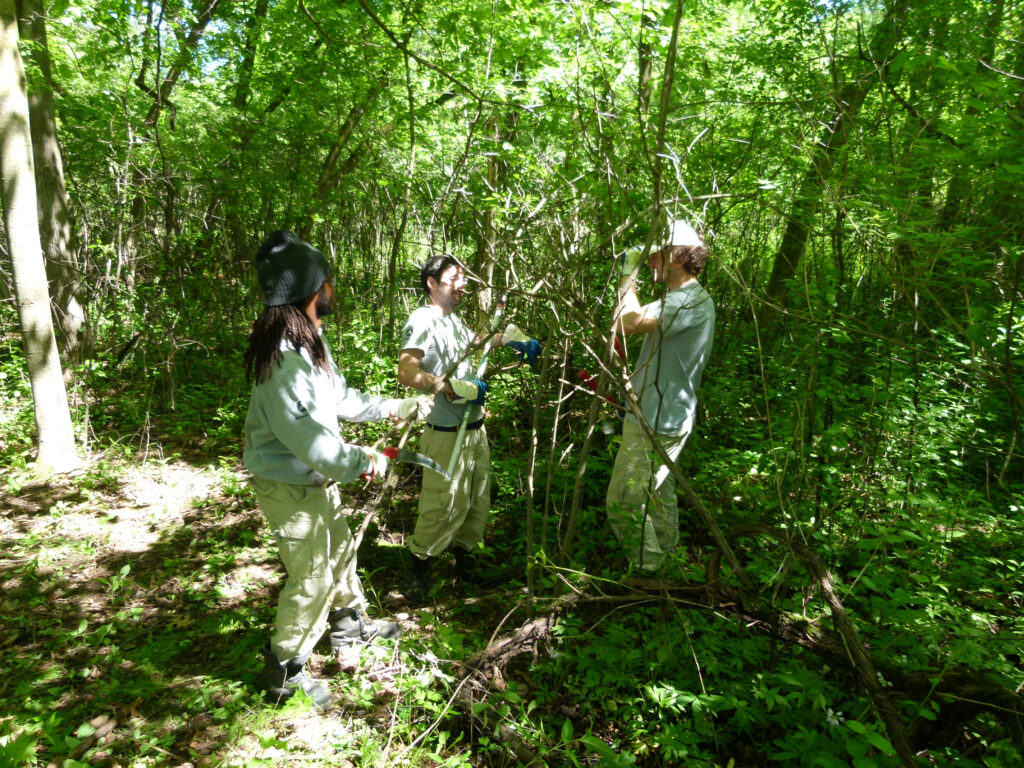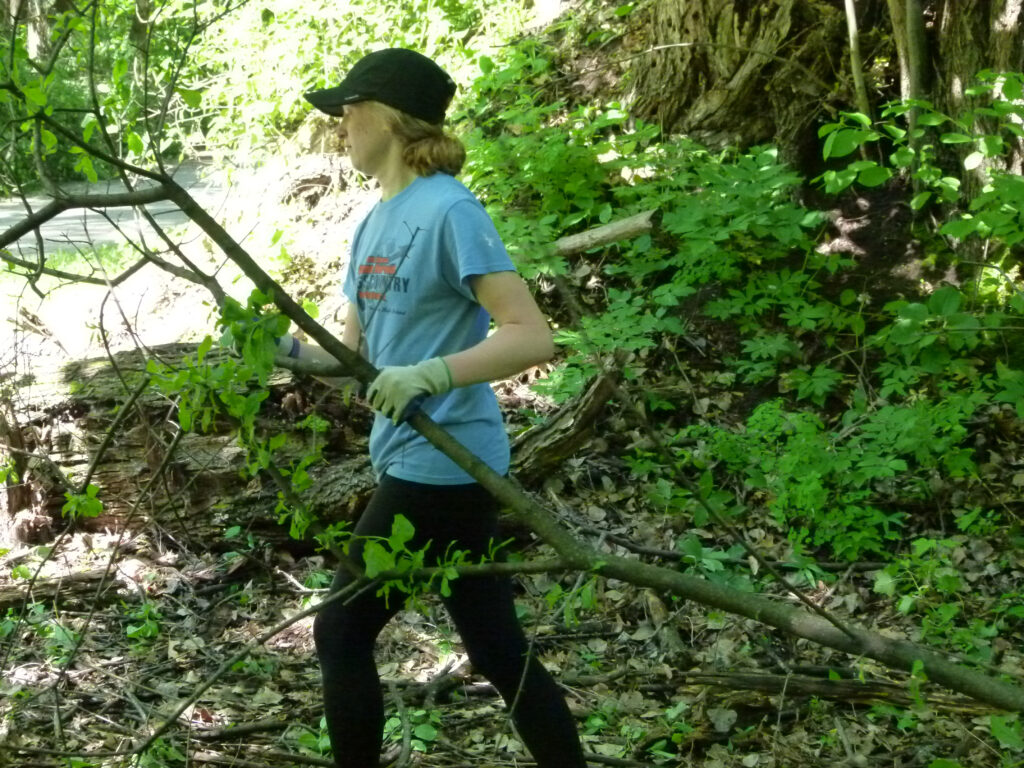By Charlie Frisk
Correspondent
GREEN BAY – For the first time ever, an AmeriCorps team has come to Green Bay to work on an environmental project with the Baird Creek Preservation Foundation.
AmeriCorps was created in 1993 by former President Bill Clinton’s administration, and is a network of national, state and local programs that connects more than 70,000 Americans to meet community needs in education, the environment, public safety, health and homeland security.
Most of the AmeriCorps teams are composed of college-age individuals.
The agency’s mission is to improve lives, strengthen communities and foster civic engagement through service and volunteering.
From May 5 through June 21, an AmeriCorps team of seven volunteers worked on environmental problems in the Baird Creek Greenway.
Though the team worked on plantings, trails and a variety of other jobs, its primary focus was the removal of harmful invasive species.
Many ecologists rank invasive species as second only to loss of habitat as a cause of species becoming endangered or going extinct.
Some of the most damaging invasives in the Green Bay area are plants.

Baird Creek invasives
A large portion of the habitat restoration done in the Baird Creek Greenway by the Baird Creek Preservation Foundation involves removal of invasive species, with main culprits being buckthorn, Eurasian honeysuckle, garlic mustard and Phragmites.
Buckthorn illustrates well the problems that invasives can cause – actually changing the soil chemistry to benefit itself and non-native earthworms (that cause their own set of problems in northern forests) and prevent native plants from occupying that area.
Nothing eats buckthorn – deer and other browsers, as well as insects, never touch it.
Birds will eat the buckthorn berries, but the outer skin of the berry contains an irritating toxin that causes the birds to regurgitate the berries along with all of the other food in their crops.
This provides both transport and fertilizer for the seeds.
And buckthorn is devilishly hard to kill.
Cutting it down just makes it angry, and it responds by sending up dozens of suckers.
In order to kill buckthorn, the cut stem must be brushed with a strong herbicide, such as glyphosate, something that many environmental groups are reluctant to do.
So in summary, buckthorn can turn a healthy forest into a biological desert, because nothing eats it, it displaces desirable native species, chokes out the sunshine from reaching the natives on the forest floor and is very difficult to kill.
Insects and parasites
Though introduced plants can harm native communities in many ways, there is one common issue that comes with all of them – they leave their insects and parasites behind when they are introduced to another part of the world.
This is a two-edged sword.
With no insects to feed on them and no parasites to rob nutrients and cause disease, they reproduce totally out of control.
Because they support no insects in their new environment, they disrupt the flow of energy through the biological community.
Typically, plants are the first step on the food chain, with insects as the second.
Many fish, amphibians, reptiles, birds and mammals then feed on the insects.
With no insects, the first step on the food chain ends up being the last.
Doug Tallamy, a professor in the Department of Entomology and Wildlife Ecology at the University of Delaware, has found that native oaks support more than 500 insect species, whereas ginkgoes, an introduced species from Asia, support zero insect species.
Many bird species – chickadees are a prime example – depend almost entirely on protein and fat-rich caterpillars to feed their developing young.
Tallamy’s research showed that yards dominated by invasive plants produced 75% less caterpillar biomass than primarily native landscapes and were 60% less likely to have breeding chickadees at all.

AmeriCorps team
The AmeriCorps team was composed of young adults from all over the country, some from Missouri, Kentucky, Kansas, Virginia and more.
While the work they did may appear to be hard to many people – hot, itchy and scratchy – the volunteers said they came away with very positive feelings of their work.
Some of their thoughts about the program included wishing they knew about places like Baird Creek sooner, enjoying using saws to cut buckthorn and being able to watch everything leaf out and bloom.
Emily Schieferdecker from Missouri said she appreciated the “connections we’ve made along the way, learning to talk to people, coming out of my shell.”
“Through AmeriCorps, I’ve turned from an introvert into an extrovert,” she said.
Caddo Turney from New Mexico said he appreciated “the wide variety of work experience and getting out of my comfort zone.”
During their time in Green Bay, the AmeriCorps team made quite the difference in the buckthorn population in the Baird Creek Greenway.
Having a concentrated effort of a seven-person team and two interns for six weeks on an invasive species project means a lot of progress in a shorter amount of time.
If you are out walking along the paved trail in the greenway anytime soon, look for the piles of cut buckthorn along the paved trail.
If you work with a local nonprofit and have a need for motivated, hard-working volunteers, you should look into whether your organization would qualify for an AmeriCorps team.
If you are a young person desiring hands-on work experience, valuable networking opportunities and professional skills training, a position on an AmeriCorps team might be just what you are looking for.
As a matter of fact, AmeriCorps also has a seniors program for people of retirement age.
More information can be found at americorps.gov.
